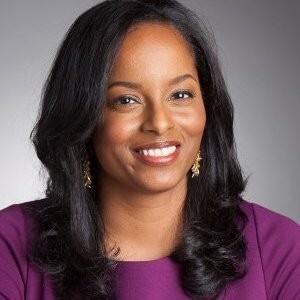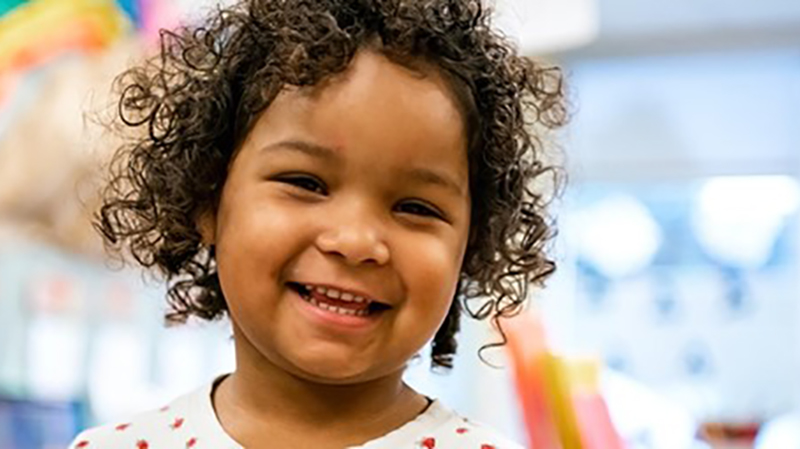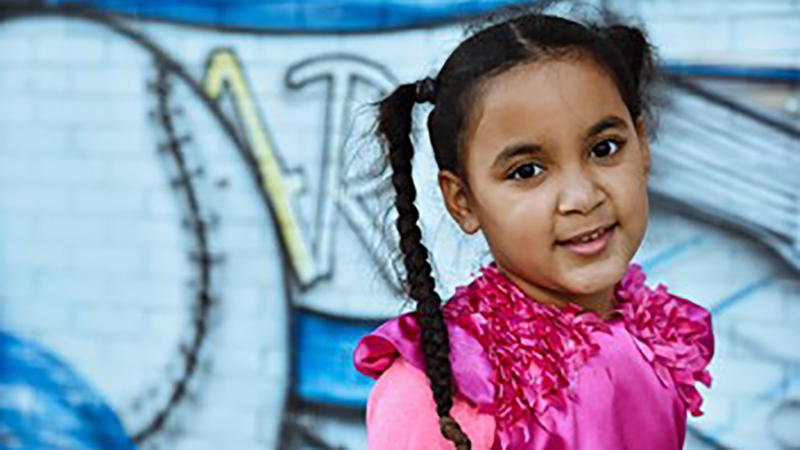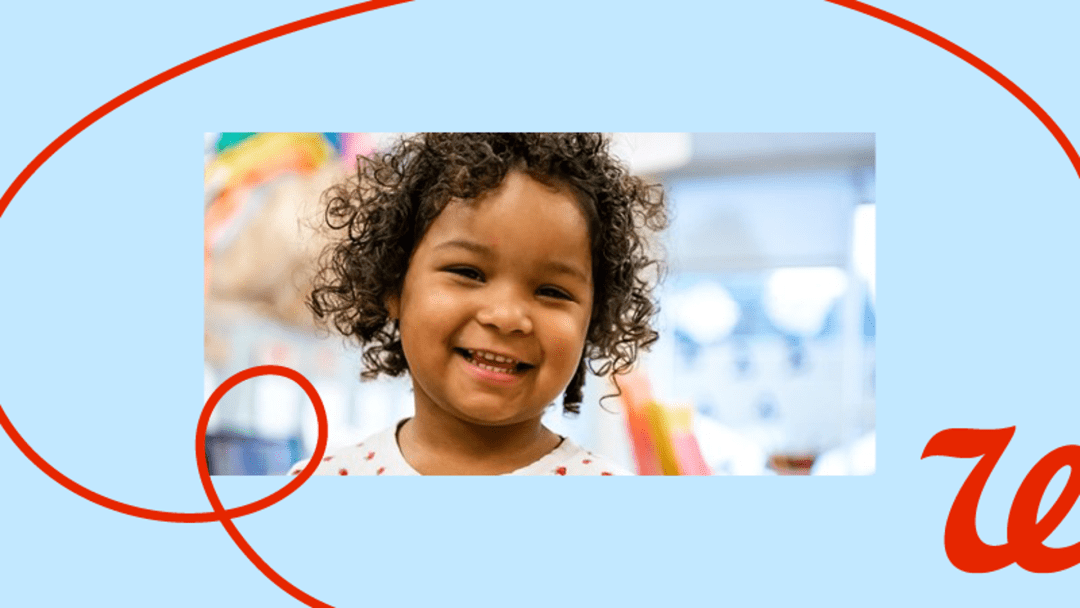Over the past six years, Walgreens customers have generated millions of dollars to support Red Nose Day, Comic Relief US’s campaign to end child poverty. Whenever a customer has purchased or downloaded an iconic Red Nose, their donation benefits the Red Nose Day Fund, which in turn supports vital programs across a range of domestic and international nonprofit partners.
Underserved children and young people have been hit hard by the COVID-19 pandemic over the past year, with reduced access to education and growing learning loss, spiking rates of hunger and homelessness, and increased isolation affecting mental health.
It can be overwhelming to think of all who need support. Thankfully, there are people like Lorelei Williams, senior vice president of grant programs for Comic Relief US, who work tirelessly to ensure crucial Red Nose Day funds are going where they are needed most.
overwhelming to think of all who need support. Thankfully, there are people like Lorelei Williams, senior vice president of grant programs for Comic Relief US, who work tirelessly to ensure crucial Red Nose Day funds are going where they are needed most.
Read on to discover how your donations make a difference for underserved children, and how Williams and her team determine what nonprofit partners and programs to support in alignment with Red Nose Day’s mission to keep kids safe, healthy, educated and empowered.
Where do Red Nose Day donations actually go?
Williams: Donations go to the Red Nose Day Fund. We make grants based on a range of factors, balancing immediate needs of children facing poverty along with driving long-term change, and we split the funds 50/50 between international and domestic organizations.
In addition to COVID, there were two other pandemics that gained strength in 2020: economic insecurity and racial injustice, all of which had a disproportionate impact on children living in poverty. So this work is really more critical than ever.
The dollars go to work immediately. We don't have an endowment. We're not putting funds away for another day. They go right out the door because we recognize the urgency.

“Empowered” is a more recent area of focus for Red Nose Day. Can you tell us why it was added?
Williams: “Empowered” focuses on economic opportunity and youth leadership development. The aim is to give kids access to a pathway out of poverty and toward employment, workforce readiness or even starting a business. For us, it's married to this intention of economic mobility and how we can break the cycles of poverty. It’s more important than ever, especially with so many families shifting into deeper levels of poverty and homelessness. Also, youth unemployment has risen to catastrophic levels, so young people don't necessarily have a path toward a better future.
A compliment to this work is the launch of our Youth Advisory Council, which allows us to listen to and talk with young people who are living in these circumstances. The council is made up of eight young leaders who are all from different backgrounds. They represent BIPOC and other historically marginalized communities, such as migrants and refugees, and they know what it is to be young and hungry for change around the world. The council’s adage is: Nothing about us, without us.
How does Comic Relief US select the partners who receive Red Nose Day funds?
Williams: Red Nose Day nonprofit partners align with our key focus areas: keeping kids safe, healthy, educated and empowered. And across all of these areas is a foundation of racial and gender equity and cultivating resilience among children. There are so many amazing and worthy organizations to choose from, but having these anchors in place makes it possible to narrow it down.
We work with a range of incredible partners both at the grassroots and national level, some who we’ve worked with for many years, and some extraordinary new organizations we’re cultivating deep relationships with. We choose these partners based on the depth, scale and impact of their work, and create a portfolio of grants that reaches many children and creates sustainable change on key issues.
We remain in close partnership with those organizations we’ve provided grants to, until the supported programs are complete. All grants go through a process of monitoring, evaluation and learning so we can truly understand the impact Red Nose Day funds have been able to make.
Can you tell us more about the impact Red Nose Day donations made in 2020, a year that was particularly challenging in the fight against poverty?
 Williams: I'll tell you about Mason, one of the 25 million children we’ve been able to help with the incredible support of the public and our partners like Walgreens. He's a 5-year-old boy who lives with his family in Santa Clara County, Calif., which is one of the poorest counties in Silicon Valley and was also the hardest hit by COVID. Many people don’t immediately think about poverty when they think about Silicon Valley, but poverty and its effects are prevalent in every community.
Williams: I'll tell you about Mason, one of the 25 million children we’ve been able to help with the incredible support of the public and our partners like Walgreens. He's a 5-year-old boy who lives with his family in Santa Clara County, Calif., which is one of the poorest counties in Silicon Valley and was also the hardest hit by COVID. Many people don’t immediately think about poverty when they think about Silicon Valley, but poverty and its effects are prevalent in every community.
In 2020, when everything shut down, Mason’s parents were afraid to send him to school. One of our partners, Start Early, specializes in early childhood education, a vital building block for future development and educational success, and we've been partnering with them for about three years. On the fly, they developed this digital learning program for early childhood students. I have a daughter who's 7, so I know the challenge of keeping kids engaged on screens. But to do that for 3-, 4- and 5-year-olds is pretty impressive.
Along with that, Start Early bolstered the program with deep and intense parent engagement. So even around Mason's mom's working hours, she was able to text and Zoom and ask questions to get a deeper understanding of how best to work with her son during the pandemic and ensure he could keep learning, developing and be engaged in the most difficult of circumstances. The impact of that intervention, which is so critical at Mason’s early age, will last a lifetime.
How did COVID-19 change the funding process?
Williams: The first step, as it is with everything we do, was to try to be responsive to our grantees — the organizations working on the frontlines that we support with funds raised through Red Nose Day. Our grantees tell us that when COVID first hit, we were among the first of their funders to ask them what they were most concerned about and how we could support. We created a pivot plan, and part of it included accelerating payments so they could have what they needed to respond immediately.
We also helped our partners repurpose their grants. A lot of them had to suddenly buy PPE and other supplies. We allowed them to have grant extensions and also delay timelines or reporting to give them more capacity in that moment. What we realized after talking to grantees is that for them, the work is the work. There was a hunger pandemic before there was a COVID pandemic. There were already critical levels of crisis among migrant and refugee children and internally displaced people. There were so many different crises in terms of equal access to education and healthcare. For them, continuing to work is the work during COVID. The crisis has exacerbated so many issues affecting underserved children and families, but they persevere.
What are some of the issues you’ve been emphasizing? Are there new Red Nose Day grantee partners you’ll be working with this year?
Williams: We've increased our emphasis on hunger, for example, which is clearly a critical problem for children and folks across the globe with almost a quarter billion facing starvation. We already had immensely valuable and rewarding partnerships with Feeding America, whose network of food banks feed the 1 in 9 people who struggle with hunger. With one of our new partners, Ali Forney Center, which protects LGBTQ+ youth from the effects of homelessness, we provided holiday meals. We work with Action Against Hunger to plant nutritious crops, sanitize water and help children grow up strong on an international scale.
We are also investing much more deeply in BIPOC-led organizations who are doing work with a lens of racial equity and social justice. For instance, Echoing Green, which focuses on funding social entrepreneurs in the US and around the world, and Grantmakers for Girls of Color, which empowers young people in BIPOC communities who have been disproportionately affected by the pandemic and by the impacts of poverty at large.

Can you tell us about some of the programs in particular need of support right now because of COVID-19?
Williams: There are so many of them. As one example, we are proud to fund and partner with the Boys and Girls Clubs of America (BGCA) on a phenomenal project, the Native Youth Program, reaching kids in Native communities that have been deeply affected by the pandemic and its wide-ranging effects. We also funded BGCA’s COVID-19 Relief Fund, which enabled the organization to allocate funding where it was needed most as part of their COVID response efforts. During the height of the pandemic, one of the things BGCA started doing was repurposing their centers to provide childcare for children of frontline workers. They also provided meals to kids who didn’t have access to them with schools being closed.
Knowing what’s at stake, what’s your outlook on this year’s Red Nose Day campaign?
Through May 31, you can donate to the Red Nose Day fund online or by visiting your local Walgreens. Once a donation has been made, you can download a Digital Red Nose filter for use on Facebook, Instagram, or Snapchat. Grants will support trusted nonprofit partners that benefit young people facing poverty across the U.S. and around the world.
Underserved children and young people have been hit hard by the COVID-19 pandemic over the past year, with reduced access to education and growing learning loss, spiking rates of hunger and homelessness, and increased isolation affecting mental health.
It can be
 overwhelming to think of all who need support. Thankfully, there are people like Lorelei Williams, senior vice president of grant programs for Comic Relief US, who work tirelessly to ensure crucial Red Nose Day funds are going where they are needed most.
overwhelming to think of all who need support. Thankfully, there are people like Lorelei Williams, senior vice president of grant programs for Comic Relief US, who work tirelessly to ensure crucial Red Nose Day funds are going where they are needed most.Read on to discover how your donations make a difference for underserved children, and how Williams and her team determine what nonprofit partners and programs to support in alignment with Red Nose Day’s mission to keep kids safe, healthy, educated and empowered.
Where do Red Nose Day donations actually go?
Williams: Donations go to the Red Nose Day Fund. We make grants based on a range of factors, balancing immediate needs of children facing poverty along with driving long-term change, and we split the funds 50/50 between international and domestic organizations.
In addition to COVID, there were two other pandemics that gained strength in 2020: economic insecurity and racial injustice, all of which had a disproportionate impact on children living in poverty. So this work is really more critical than ever.
The dollars go to work immediately. We don't have an endowment. We're not putting funds away for another day. They go right out the door because we recognize the urgency.

“Empowered” is a more recent area of focus for Red Nose Day. Can you tell us why it was added?
Williams: “Empowered” focuses on economic opportunity and youth leadership development. The aim is to give kids access to a pathway out of poverty and toward employment, workforce readiness or even starting a business. For us, it's married to this intention of economic mobility and how we can break the cycles of poverty. It’s more important than ever, especially with so many families shifting into deeper levels of poverty and homelessness. Also, youth unemployment has risen to catastrophic levels, so young people don't necessarily have a path toward a better future.
A compliment to this work is the launch of our Youth Advisory Council, which allows us to listen to and talk with young people who are living in these circumstances. The council is made up of eight young leaders who are all from different backgrounds. They represent BIPOC and other historically marginalized communities, such as migrants and refugees, and they know what it is to be young and hungry for change around the world. The council’s adage is: Nothing about us, without us.
How does Comic Relief US select the partners who receive Red Nose Day funds?
Williams: Red Nose Day nonprofit partners align with our key focus areas: keeping kids safe, healthy, educated and empowered. And across all of these areas is a foundation of racial and gender equity and cultivating resilience among children. There are so many amazing and worthy organizations to choose from, but having these anchors in place makes it possible to narrow it down.
We work with a range of incredible partners both at the grassroots and national level, some who we’ve worked with for many years, and some extraordinary new organizations we’re cultivating deep relationships with. We choose these partners based on the depth, scale and impact of their work, and create a portfolio of grants that reaches many children and creates sustainable change on key issues.
We remain in close partnership with those organizations we’ve provided grants to, until the supported programs are complete. All grants go through a process of monitoring, evaluation and learning so we can truly understand the impact Red Nose Day funds have been able to make.
Can you tell us more about the impact Red Nose Day donations made in 2020, a year that was particularly challenging in the fight against poverty?
 Williams: I'll tell you about Mason, one of the 25 million children we’ve been able to help with the incredible support of the public and our partners like Walgreens. He's a 5-year-old boy who lives with his family in Santa Clara County, Calif., which is one of the poorest counties in Silicon Valley and was also the hardest hit by COVID. Many people don’t immediately think about poverty when they think about Silicon Valley, but poverty and its effects are prevalent in every community.
Williams: I'll tell you about Mason, one of the 25 million children we’ve been able to help with the incredible support of the public and our partners like Walgreens. He's a 5-year-old boy who lives with his family in Santa Clara County, Calif., which is one of the poorest counties in Silicon Valley and was also the hardest hit by COVID. Many people don’t immediately think about poverty when they think about Silicon Valley, but poverty and its effects are prevalent in every community.In 2020, when everything shut down, Mason’s parents were afraid to send him to school. One of our partners, Start Early, specializes in early childhood education, a vital building block for future development and educational success, and we've been partnering with them for about three years. On the fly, they developed this digital learning program for early childhood students. I have a daughter who's 7, so I know the challenge of keeping kids engaged on screens. But to do that for 3-, 4- and 5-year-olds is pretty impressive.
Along with that, Start Early bolstered the program with deep and intense parent engagement. So even around Mason's mom's working hours, she was able to text and Zoom and ask questions to get a deeper understanding of how best to work with her son during the pandemic and ensure he could keep learning, developing and be engaged in the most difficult of circumstances. The impact of that intervention, which is so critical at Mason’s early age, will last a lifetime.
How did COVID-19 change the funding process?
Williams: The first step, as it is with everything we do, was to try to be responsive to our grantees — the organizations working on the frontlines that we support with funds raised through Red Nose Day. Our grantees tell us that when COVID first hit, we were among the first of their funders to ask them what they were most concerned about and how we could support. We created a pivot plan, and part of it included accelerating payments so they could have what they needed to respond immediately.
We also helped our partners repurpose their grants. A lot of them had to suddenly buy PPE and other supplies. We allowed them to have grant extensions and also delay timelines or reporting to give them more capacity in that moment. What we realized after talking to grantees is that for them, the work is the work. There was a hunger pandemic before there was a COVID pandemic. There were already critical levels of crisis among migrant and refugee children and internally displaced people. There were so many different crises in terms of equal access to education and healthcare. For them, continuing to work is the work during COVID. The crisis has exacerbated so many issues affecting underserved children and families, but they persevere.
What are some of the issues you’ve been emphasizing? Are there new Red Nose Day grantee partners you’ll be working with this year?
Williams: We've increased our emphasis on hunger, for example, which is clearly a critical problem for children and folks across the globe with almost a quarter billion facing starvation. We already had immensely valuable and rewarding partnerships with Feeding America, whose network of food banks feed the 1 in 9 people who struggle with hunger. With one of our new partners, Ali Forney Center, which protects LGBTQ+ youth from the effects of homelessness, we provided holiday meals. We work with Action Against Hunger to plant nutritious crops, sanitize water and help children grow up strong on an international scale.
We are also investing much more deeply in BIPOC-led organizations who are doing work with a lens of racial equity and social justice. For instance, Echoing Green, which focuses on funding social entrepreneurs in the US and around the world, and Grantmakers for Girls of Color, which empowers young people in BIPOC communities who have been disproportionately affected by the pandemic and by the impacts of poverty at large.

Can you tell us about some of the programs in particular need of support right now because of COVID-19?
Williams: There are so many of them. As one example, we are proud to fund and partner with the Boys and Girls Clubs of America (BGCA) on a phenomenal project, the Native Youth Program, reaching kids in Native communities that have been deeply affected by the pandemic and its wide-ranging effects. We also funded BGCA’s COVID-19 Relief Fund, which enabled the organization to allocate funding where it was needed most as part of their COVID response efforts. During the height of the pandemic, one of the things BGCA started doing was repurposing their centers to provide childcare for children of frontline workers. They also provided meals to kids who didn’t have access to them with schools being closed.
Knowing what’s at stake, what’s your outlook on this year’s Red Nose Day campaign?
Williams: I'm excited about helping more kids like Mason. In the face of a crisis, everything can seem so daunting and almost paralyzing. People wonder, what can I possibly do to help? It may seem corny, but in many ways, the Red Nose is a beacon. It’s a call to action. We actually can make a difference. The Red Nose symbolizes that we're in this together. We can do something. And that action translates into tangible shifts for children who need our solidarity and support now more than ever.
Through May 31, you can donate to the Red Nose Day fund online or by visiting your local Walgreens. Once a donation has been made, you can download a Digital Red Nose filter for use on Facebook, Instagram, or Snapchat. Grants will support trusted nonprofit partners that benefit young people facing poverty across the U.S. and around the world.
